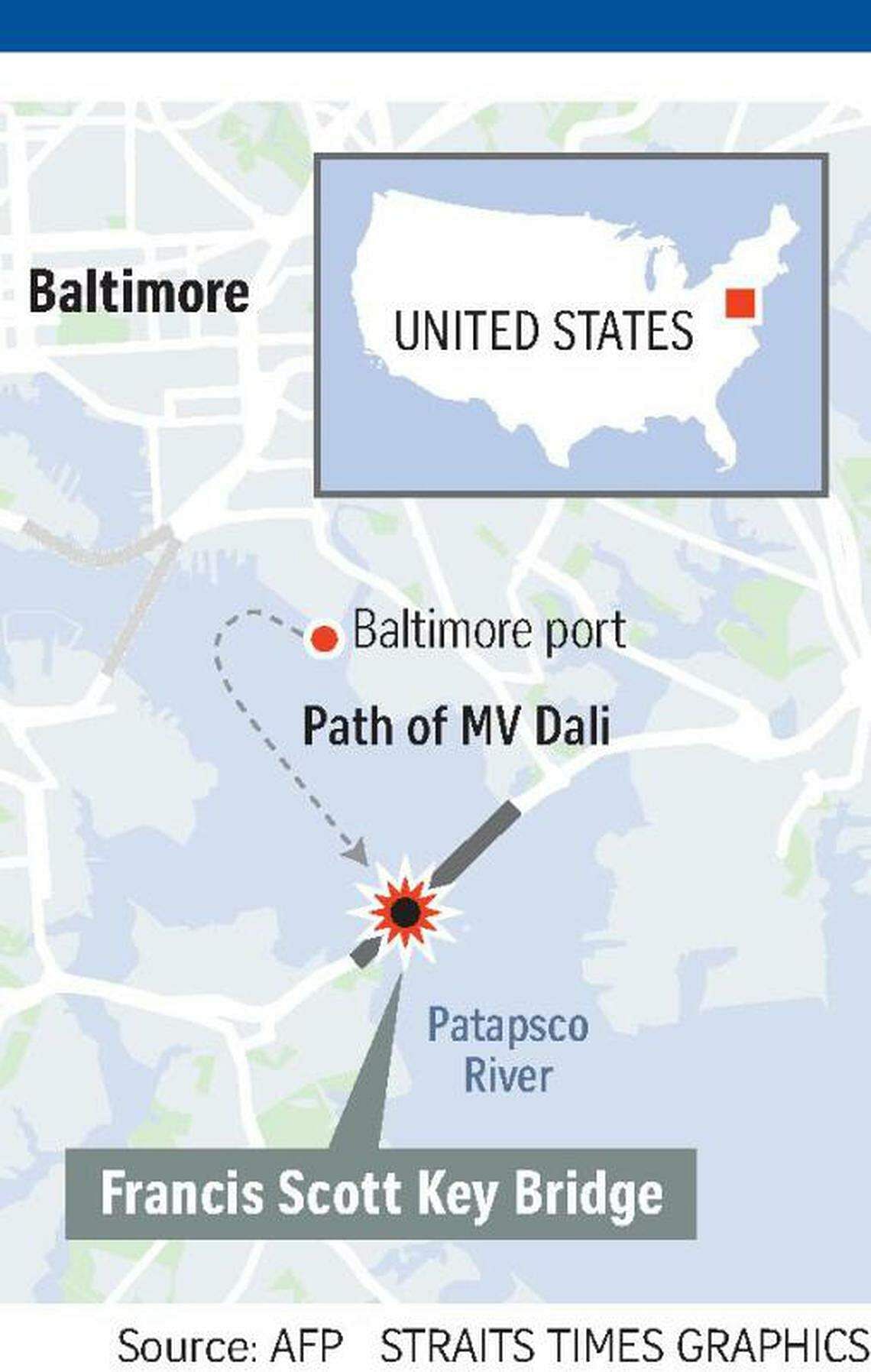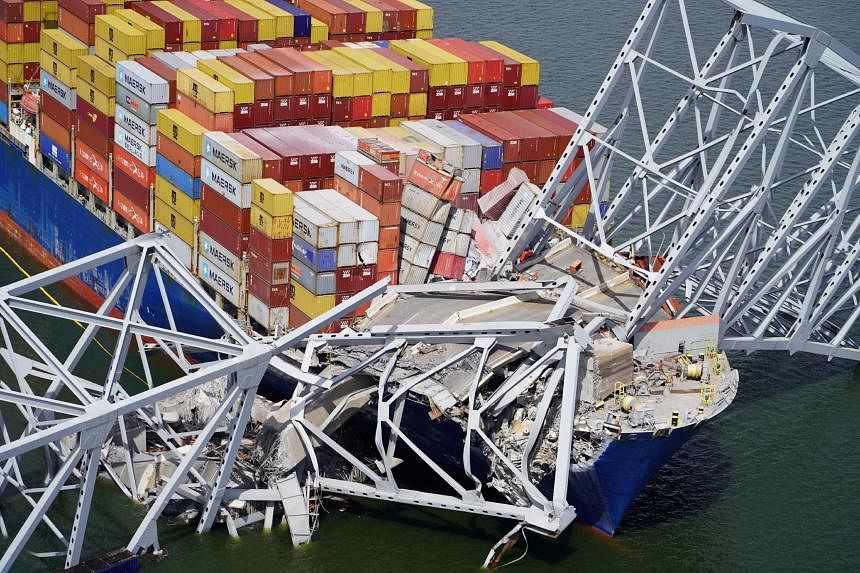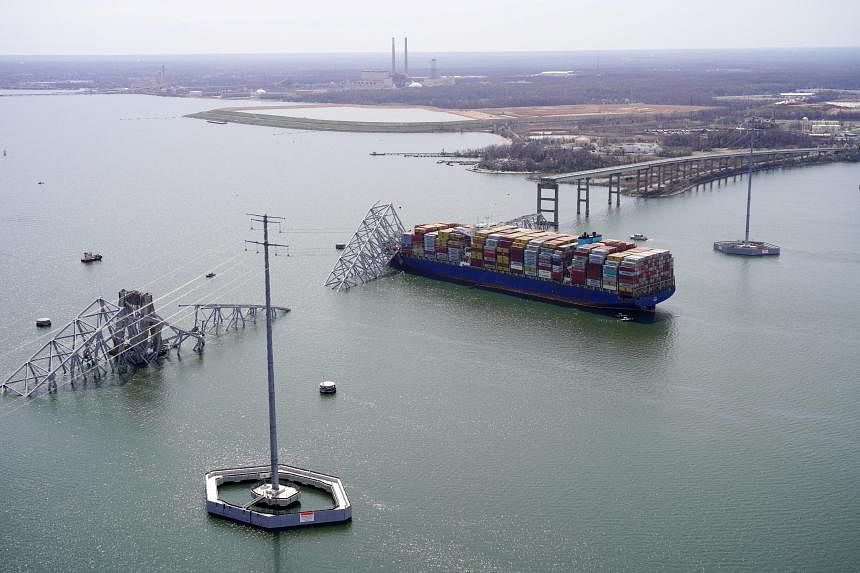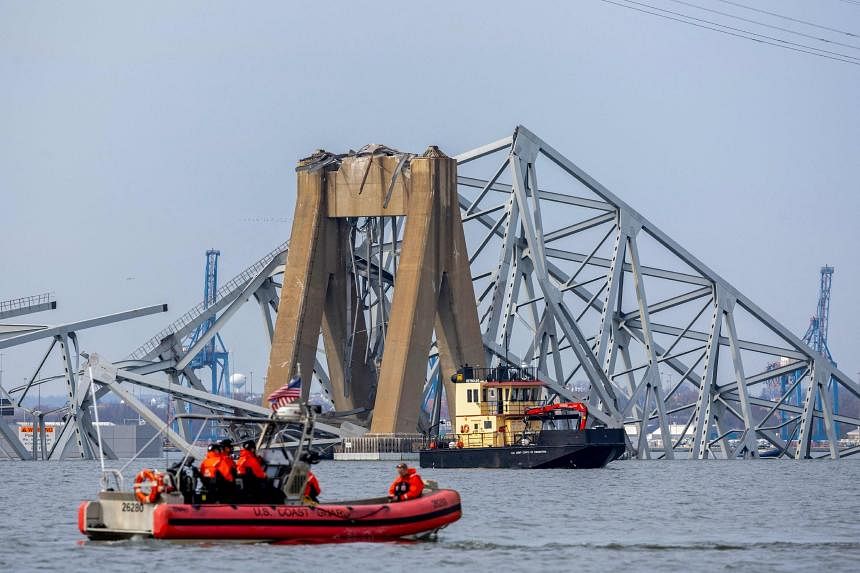NEW YORK - The Francis Scott Key Bridge in Baltimore suffered a near-total collapse after a large container ship appeared to strike a critical component, known as a pylon or pier, and much of the structure above it plummeted into the water below, according to several engineers who have reviewed footage of the incident.
Without the pier, they said, it was impossible for other components of the bridge to assume the load and keep the bridge standing.
The piers on a bridge act as a kind of leg and are what is known as “non-redundant” parts of a bridge’s structure. If a pier is somehow taken out, there is nothing to compensate for the missing structural support, and a collapse of the bridge is all but inevitable, most of the analysts said.
Yet the collapse in Baltimore on March 26 might have been avoided, some of the engineers said, if the piers were adequately equipped with blocking devices with a self-explanatory name: fenders.
In bridge engineering, fenders can be anything from simple pyramids of rocks piled around the pylons to major concrete rings padded with slats of wood, designed to shield the bridge’s supports from damage by water or collisions.
It is not clear whether any such protection built around the bridge’s piers would be sufficient to guard against even a glancing hit from a 95,000 gross ton container vessel.
The Maryland Transportation Authority did not immediately respond to a request for comment on the design of the piers, or whether any fenders were installed around them.
At a news conference on the afternoon of March 26, the chair of the National Transportation Safety Board, Ms Jennifer Homendy, said protective structures would be a part of the investigation into the bridge’s collapse.
“There are some questions about the structure of the bridge – protective structure around the bridge or around the piers to make sure there isn’t a collapse,” she said, responding to a reporter’s question.
“We are aware of what a structure should have. Part of our investigation will be how was this bridge constructed? It will look at the structure itself. Should there be any sort of safety improvements? All of that will be part of our investigation.”
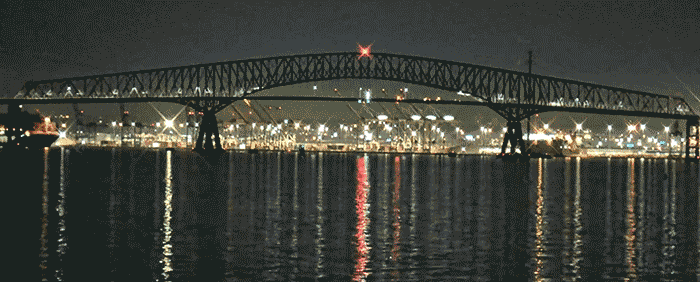
A widely circulated video of the bridge failure drew attention to the disastrous collapse of the upper bridge structure. But engineers who reviewed the footage said that did not appear to be the culprit in the disaster. Instead, they said, the superstructure failure was most likely a secondary effect of the pier crumbling beneath it after the crash.
Engineers who reviewed images of the bridge both before and after the collapse said no significant fender structures were visible. Only fairly small structures were visible in photos taken at the foot of the pier, and they did not appear to be substantial enough to be able to stop a large ship, some of them said. They said the structures may have served another purpose entirely – like preventing water from scouring and undermining the pier’s foundation.
In some bridges, instead of fendering, engineers may elect “the alternative of making the pier exceptionally strong”, said Dr Shankar Nair, a structural engineer with more than a half century of experience who is a member of the National Academy of Engineering. But the visual evidence so far, he and others said, suggested that the pier was simply not strong enough to survive the crash.
The structure’s apparent vulnerability left some engineers dumbfounded.
“This is a huge shock,” Dr Nair said. “A bridge of that size and importance should not collapse when hit by an errant vessel.”
The importance of sturdy fenders on bridge piers was backed up by a similar accident that occurred in 2013 when a 230m-long tanker crashed into a support of the San Francisco-Oakland Bay Bridge. According to a National Transportation Safety Board report on the incident, the support stood – although US$1.4 million in damage was done to the fendering system, which cushioned the impact.
In other cases when collisions led to full or partial collapses, shortcomings in the fendering system were usually involved, said Mr Matthys Levy, a long-time structural engineer and co-author of the book Why Buildings Fall Down.
“It’s usually an issue of fendering,” he said. “The fendering is not strong enough.”
According to a description of the Key Bridge in an American Society of Civil Engineers manual, the 2.6km-long structure in Baltimore was opened to traffic in 1977. The steel span above it, a design known as a truss, can be vulnerable to failure itself – damage to individual elements of the truss can theoretically cascade into a wider collapse. But that did not appear to be the case in Baltimore, according to engineers who reviewed the footage. The truss, they said, was simply unable to remain intact when the pier was taken out beneath it.
The March 26 collapse raises the question “of how vulnerable are the piers and what is done or should have been done to protect them in the event of something like this”, said Mr Donald O. Dusenberry, a consulting engineer who has investigated many bridge failures.
In pointing to the issue of fender protection, he said it was impossible to make a full determination of what was installed without reviewing structural drawings of the bridge.
But images taken before the disaster, he said, suggested that small barriers that could be seen rising around the bridge’s piers, roughly at water level, would be unlikely to be able to stop a large ship. Effective fenders, he said, have to be far enough from the pier to keep the bow of a large ship from striking the pier, and large enough to absorb the energy of a collision. Assuming nothing had changed since the pictures were taken, he said, the visible structures did not seem up to that task.
“Maybe it would stop a ferry or something like that,” he said. “Not a massive, ocean-going cargo ship.”
Questions raised
The March 26 crash was at least the second in just over a month in which a container ship hit a major road bridge, raising questions about the safety standards of increasingly large ships and the ability of bridges around the world to withstand crashes.
On Feb 22 in Guangzhou, a port in southern China, a much smaller vessel carrying stacks of containers hit the base of a two-lane bridge, causing vehicles to fall. Officials said that five people were killed.
The crashes have also raised questions about whether more ships should be required to be ready to drop anchors quickly during port emergencies, and whether tugboats should accompany more vessels as they enter and leave harbours.
There has not been a final report on the Guangzhou incident, and investigators have barely begun to look at what happened in Baltimore.
But ship collision barriers are standard around the support piers of bridges over major waterways such as the entrance to Baltimore’s harbour. The Verrazzano-Narrows Bridge in New York City, for example, has massive barriers of concrete and rocks around the bases of the piers that support it.
It is not immediately clear how old the barriers are around the piers that supported the bridge in Baltimore. The bridge was built almost half a century ago and designed before then. Vessels have become considerably larger in that time.
The crash in Guangzhou occurred on a less-important waterway, a minor channel of the Pearl River. The bridge there was being fitted with devices designed to protect the piers in case of any ship crash. The work was supposed to have been completed by 2022 but had been delayed, and the latest target for completion was August 2024, according to China Central Television, the state broadcaster.
Harbour pilots and crews of many large ships have two anchors ready to drop as they enter or leave a harbour, in case an emergency such as a loss of power means that they need to try to stop quickly.
Mr Basil M. Karatzas, chief executive of Karatzas Marine Advisors, a ship inspection company in New York, said that while he had seen tanker crews commonly take this precaution, it was less common for container ships.
“The anchors have to be unlocked and ready to be dropped, and this takes some time to prepare, as generally crew members physically at the bow have to unlock them and release them,” he said. “That’s not something you can do in an emergency.”
Large ships are often accompanied by tugboats as they leave or enter harbours, so that the tugboats can push them away from harm if the ship has difficulties. It was not immediately clear whether tugboats had accompanied the ship that struck the bridge in Baltimore.
The Singapore-flagged Dali was exiting the harbour as a spring tide was rushing out of the harbour. The moon was still almost completely full, having reached its fullest less than 24 hours earlier.
Full moons in springtime are associated with some of the largest tidal changes in local sea level. And while Baltimore’s harbour experiences fairly small changes even during springtime full-moon tides, tidal movements of water could have been a factor in the bridge impact.
“The ebbing tide increases the speed of the water seawards, which effectively has a cumulative effect on the speed of an outbound vessel, and any currents in the water could also have complicated navigation,” Mr Karatzas said. NYTIMES
